Did you know that the rainbow butterfly is the advocacy symbol for ADHD? Look at it below – pretty, isn’t it?

The butterfly was chosen because it represents the rapid fluttering movements of the mind of a person with ADHD. And it retains the rainbow figure-of-eight shape because the rainbow infinity symbol is a symbol of neurodiversity – mentioned in our article about autism! Neat, right?
Wrapping up Developmental Disabilities Month, ONE Intervention is excited to share with you this article about ADHD. We’re covering
- What it is
- Its symptoms and causes
- Some myths and facts
- Its diagnosis and treatment
- And communities where you can find support!
Ready? We’re fluttering (ha, get it?) with excitement to share all this with you, so read on now to find out more!
What Is ADHD?
Okay, so let’s clarify what it stands for, first. It’s the acronym for Attention Deficit Hyperactivity Disorder – a neurodevelopmental disorder, according to the National Institute of Mental Health.
We all know that kids can have loads of excess, pent-up energy. That’s perfectly fine and should really be expected of our little ones.
But for a child with ADHD, their symptoms of hyperactivity, impulsiveness and disorganisation are noticeably greater than expected for their developmental level. To note, this is certainly not because the child is lazy or wants to be easily distracted.

Research has shown that people with ADHD have a smaller prefrontal cortex in their brain than those without. The prefrontal cortex controls a person’s executive function, like time management and day-to-day organisation.
So, very simply put – a person with ADHD has a brain structure that makes it more difficult for them to stay as focused as a person without.
There are three types of ADHD:
- Predominantly inattentive presentation
- Predominantly hyperactive presentation
- Combined presentation
And each of these presentations have different symptoms. If it sounds complicated right now, that’s okay! We’ll break down each type of presentation. Stick with us to find out.

What Are The Symptoms of Each Presentation?
Symptoms of Predominantly Inattentive Presentation
Predominantly inattentive presentation basically means that the child is unable to remain as focused for as long or as hard as their peers without ADHD. This could manifest in a variety of symptoms, including but not limited to:
- Not paying close attention to details and making careless mistakes
- May start tasks quickly but lose focus before they are finished
- Often loses objects frequently used in daily life e.g. phone, wallet, keys
- Is easily distracted
- Forgets daily tasks e.g. running errands and doing chores
Symptoms of Predominantly Hyperactive Presentation
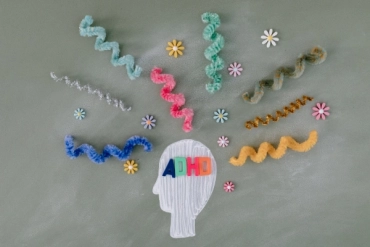
A child with predominantly hyperactive presentation could be more restless and fidgety than their peers without ADHD. They could also be highly impulsive, and not entirely think things through before doing them. A few (but by no means exhaustive) symptoms of this type are:
- Often fidgets and squirms in seat
- Runs around and/or climbs in inappropriate situations e.g. classroom setting
- Seems to be always ‘on the go’ or acts as if ‘driven by a motor’
- Has difficulty waiting for their turn
- Interrupts others’ speech or blurts out answers before the question is finished
Of course, the symptoms of a combined presentation would then be a mix of the two above presentations. However, we should remember that ADHD exists on a spectrum! So, a person with both hyperactive and inattentive presentations may not exhibit symptoms of both in equal proportions.
For a more comprehensive list on symptoms of both presentations, be sure to check out Psychiatry.org‘s insightful article!
What Are Its Causes?
Researchers are still figuring out the exact, specific cause of ADHD. But it’s clear that there are some contributing factors. Here are a few:
- Genetics: ADHD tends to run in families. For example, a person whose parent or sibling has it is more likely to have it themselves.
- Environmental factors: Certain environmental factors – like lead exposure – can be quite harmful towards children, and contribute as a risk factor towards having ADHD.
- Brain structure and function: As earlier mentioned, people with ADHD have a smaller prefrontal cortex and this could result in executive dysfunction.
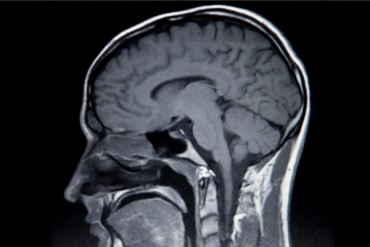
What are some myths and facts about ADHD?
Myth: People with ADHD are incapable of being organised and managing their time well.
Bzzt! That’s completely false! A person with ADHD can stay organised and focused, just that it’s much harder for them to do so than the average person without. Many people with ADHD excel and go on to become extremely successful people in their fields.
The athlete Molly Seidel is diagnosed with ADHD, yet she’s gone on to achieve a Bronze at the Tokyo Olympics. And the singer Reneé Rapp is also diagnosed, yet she maintains an extremely successful musical career.And for even more stories, check out this article by Additude!
Bottom line is, people can have high-functioning ADHD. But all the same, it takes a heavy physical and emotional toll on them. Actually, they can get exhausted and burnt out even faster because of the compensatory strategies they use to cope.

Myth: People with ADHD are just lazy and don’t want to be productive.
Nope! It’s a neurodevelopmental disorder and putting things off can serve as a coping mechanism for some. When faced with a number of challenging things to do, people with ADHD may just freeze and become unable to perform as effectively as they’d like to.
That’s called task paralysis. It could happen because they are overthinking or overanalysing the problems, and are simply overwhelmed.
Also, they can sometimes have time blindness. This means that their sense of time is impaired – it’s harder for them to estimate how long something could take. Often, they under- or overestimate the amount of time needed to accomplish a task.
This poor time management could result in less amount of work being done in a fixed time – in other words, the individual could be less productive, even though they’d really like to finish their work.

Myth: ADHD is a mental ‘illness’.
It’s in fact a developmental disorder and people with ADHD are neurodivergent. This means that their brains are structured slightly differently than people without ADHD or any other developmental disorders. The latter is known as neurotypical.
Other examples of neurodivergence can include people with autism, people with dyslexia and people with Down Syndrome.
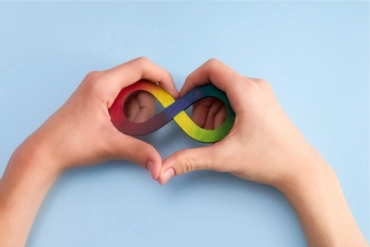
How is ADHD Diagnosed and Treated?
There’s no simple, straightforward test that can definitively diagnose a person with ADHD.
Most of the time, it’s diagnosed by ‘watchful waiting’ – that means, the parent will watch out for symptoms in their child for about 10 weeks and see if they persist.
If the person being diagnosed is an adult, a physical examination is conducted and a series of interviews is carried out. The interviews could include reports from the individual’s loved ones as well, to get the most objective insight of how the person functions in day-to-day life.

Diagnosis of ADHD in children follows the American Psychiatric Association’s Diagnostic and Statistical Manual – the DSM-5. Basically, children must exhibit 6 or more symptoms of attention and/or hyperactivity up to age 16 years, for more than 6 months.
For a more in-depth read into how it’s diagnosed, give this article by CDC Singapore a try!
As for how it’s treated, this could be a combination of therapy and medicine.
Therapy for ADHD
For children under 6 years old, medicine is not usually the first recommended therapy due to their very young age. Instead, other types of therapies are used, such as:
- Behaviour therapy
- Training for parents in behavioural management
- Psychoeducation where the child is encouraged to discuss ADHD and its effects.

Medication for ADHD
For children older than 6 years old, a combination of therapy and medication is used. The medicine used for ADHD works by increasing the levels of chemicals in the brain.
Broadly, ADHD medication can be classed into stimulants and non-stimulants.
Stimulants increase the chemicals called neurotransmitters in the brain, while non-stimulants increase the chemicals called norepinephrine. Both work to help people with ADHD
- Increase attention span
- Reduce hyperactivity
- Control impulsivity
For a deeper dive into each type of medication and their effects, Cleveland Clinic has an amazing article!
Where can I find communities to support people with ADHD?
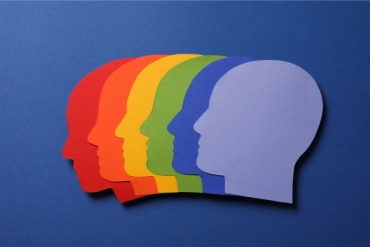
We’re glad you asked! Of course, ONE Intervention has always got your back. We’ve got a wealth of resources on articles about ADHD, including:
🔗 ADHD and Sleep: Managing Sleep Disorders in Children which covers how ADHD might affect a child’s quality of sleep,
🔗 The Unexpected Ally: How Technology Can Empower Your Child with ADHD which goes into detail about how technology can aid you and your child with ADHD
🔗 Distinguishing Developmental Differences: ADHD vs. ASD in Children which clarifies the difference between ADHD and Autism Spectrum Disorder.
Besides ONE, there are also plenty of other communities to support people with ADHD in Singapore!
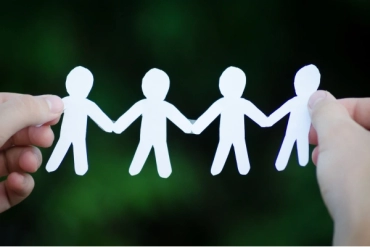
Unlocking ADHD is a registered charity and social service in Singapore that aims to empower people with ADHD. Their website features plenty of articles, testimonials, and even a discord chat if you just want to talk to people in the community.
Colourfully is a support group in Singapore for adults with ADHD. They organise group meetings to provide a solid support network for people with ADHD. Besides that, they also host workshops and offer therapy for people with ADHD.
And this concludes our series of articles on developmental disabilities to celebrate Developmental Disability Month! Got any questions or experiences that you’d like to share with us? We’d love to listen. Drop us a comment below! 💬👇


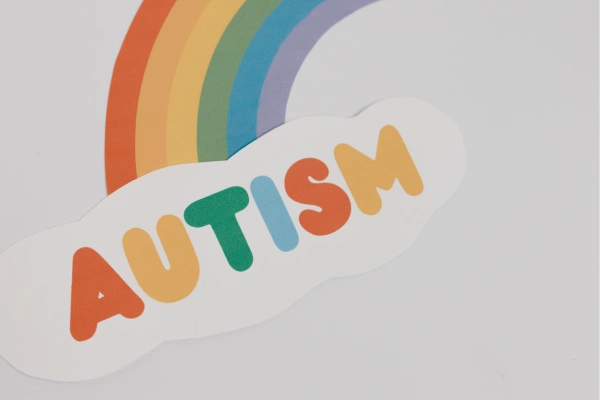
1 Comment